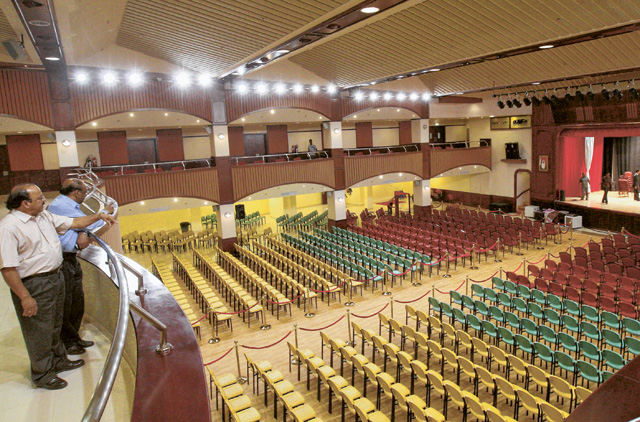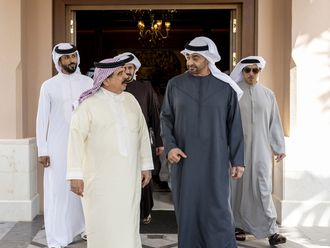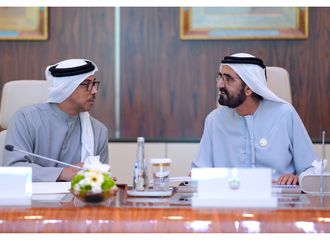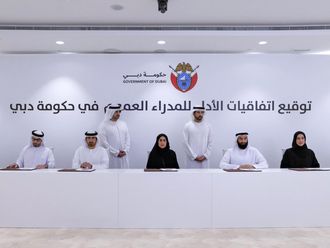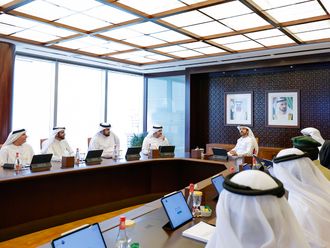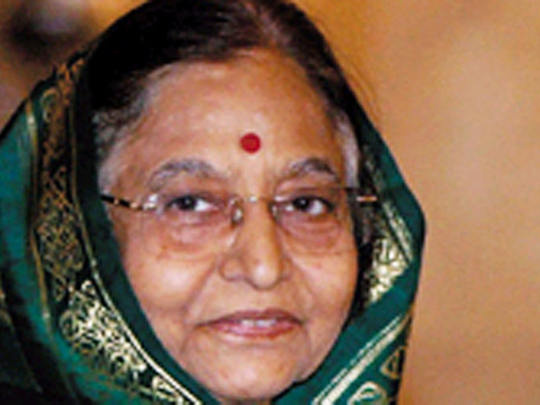
Abu Dhabi: The UAE and India have historical links as peoples of the two countries have criss-crossed the Arabian sea from time immemorial, said President of India Pratibha Devisingh Patil, on the occasion of her official visit to the UAE from November 21 to 26.
She told Emirates News Agency (WAM) in an interview that "We fondly recall the visit of Shaikh Zayed Bin Sultan Al Nahyan, father of the UAE to India in 1975 and 1992. Prime Minister Indira Gandhi visited the UAE in 1981. My predecessor Dr Abdul Kalam also paid a successful visit to the UAE in 2003."
President Patil highlighted that India is committed to pursue a common strategic vision for promoting regional peace and security and for the enhancement of the relations with the UAE in the political, economic, security and cultural fields.
"During the period 2009-2010, the bilateral trade stood at $43 billion which makes UAE and India, the largest trading partners. The exports from India amounted to $24 billion and imports from the UAE amounted to $19 billion. These figures exclude trade in oil. The trade volume is, therefore, substantial and more or less balanced. I feel that there is potential to expand the trade further and our objective should be to reach a trade value of $100 billion in five years", she added.
The excerpts of the interview below:
An exchange of visits at the highest levels between states is a widely acknowledged way of developing bilateral ties. What results do you expect from the forthcoming November 2010 official visit to the UAE?
We have historical and civilisational links with the UAE and the Arab world. This is my first official visit to the Gulf region and the UAE is the first country that I am visiting in this region. The UAE is part of our extended neighborhood and our people have criss-crossed the Arabian sea from times immemorial, establishing, in the process, enduring bonds at people to people level. In the contemporary times, we have sustained and nurtured these links with exchange of high level visits at political level. We fondly recall the visit of Shaikh Zayed Bin Sultan Al Nahyan, father of the UAE to India in 1975 and 1992. Prime Minister Indira Gandhi visited in 1981. My predecessor Dr Abdul Kalam also paid a successful visit to UAE in 2003. India is committed to pursue a common strategic vision for promoting regional peace and security and for the enhancement of our relations in the political, economic, security and cultural fields. My visit is meant to renew our dialogue with the leadership of the UAE on taking our relations forward and to interact with the business and the Indian communities.
What new areas are there where, in your view, collaboration between the UAE and India can be developed? Is there, for example, scope for the UAE to benefit from partnership with India in terms of modern technology, especially computer technology, where India is an acknowledged global leader?
India's ties with the Arab world go back several millennia. The relationship rooted in history needs to be constantly revitalized to make it relevant and dynamic amidst new realities and expectations. India and the UAE have witnessed rapid modernisation of their societies and economies. Both are vastly different from what they were a few decades ago. Time and again it is proven that our relations have an element of complimentarily and there is no conflict of interest between us. We share common destiny in the contemporary world and we have much to gain by intensifying our cooperation with each other. We have a huge stake in each other's success, and to that extent ours is a relationship that is of strategic importance. We have achieved the status of being each other's largest trading partner. There is need for greater integration of our economies, higher flow of trade and investment. Cooperation in energy and environment are assuming importance in our relations as also cooperation in counter-terrorism, tackling the global economic crisis, education and many other issues. UAE is important for our energy security.
What is the level of current trade between India and the UAE, in terms of imports, exports and re-exports?
During the period 2009-2010, the bilateral trade stood at $43 billion which makes UAE and India, the largest trading partner for each other. The exports from India amounted to $24 billion and imports from UAE amounted to $19 billion. These figures exclude trade in oil. The trade volume is, therefore, substantial and more or less balanced. I feel that there is potential to expand the trade further and our objective should be to reach a trade value of $100 billion in five years.
Can you provide a figure for the level of UAE investment, either directly or as part of joint ventures, in the Indian economy?
The Foreign Direct Investment from UAE in India is around $1.5 billion. In addition, there are portfolio investments by a few companies, including sovereign funds of the UAE. Some of the investments, such as those by the DP World is in our infrastructure areas and hence make positive contribution to our economic growth. But it is a fact that the investments from UAE are small in comparison to the potential that exists. India is currently the second most attractive investment destination in the world. But there are signs that UAE investors are now turning their attention to emerging economies and we need to facilitate this process so that our economies get integrated more and more and the complementarities of our interests will lead to mutually beneficial and enduring partnership.
In which key areas of the Indian economy are there opportunities for inward investment from the UAE?
India is the second fastest growing economy in the world. A major share of the growth is accounted for by the services sector. A majority of our population is young and hence the growth in demand will be sustained in the long term. Our infrastructure needs colossal investments because the gap between demand and supply is wide in power, communications, transport, ports and other sectors. Therefore, the number of sectors in the Indian economy with opportunities for UAE investors is large.
India is a major consumer and importer of energy. Do the state-owned oil and gas companies in India seek opportunities to invest in the production of oil and gas in the UAE?
The Indian oil companies have invested heavily in countries such as Russia, Sudan, Nigeria, Oman, Brazil, Iran, Venezuela and other oil-rich countries. Due to historical reasons, the involvement of Indian companies in the UAE oil sector is relatively low compared to oil companies from the Western countries. However, many Indian companies are involved in the UAE oil sector in areas such as oil-field services, pipeline construction and maintenance. One of the objectives of my visit is to discuss India's participation in large infrastructure projects such as Railways, Oil and Petro-chemicals sectors.
What new developments do you anticipate over the next years in terms of bilateral investment and joint ventures, whether in the UAE or in India?
India is not only an attractive destination for foreign investments, but India is also emerging as a major investor abroad. During the financial year 2009-2010 around 3,000 proposals amounting to more than $ 15 billion were cleared for investments abroad by Indian companies. The number of proposals recorded an increase of 6 per cent over the previous year. The increase was achieved despite the global economic crisis. India is in the midst of a major disinvestment programme in the public sector undertakings in energy, power, minerals, shipping and other areas. We are keen that the investors in UAE, especially the sovereign funds should take advantage of this programme. Abu Dhabi Investment Authority, Abu Dhabi Investment Council are some of the major sovereign funds in the world. We are keen to strengthen cooperation with them.
How do you view the current degree of cooperation between India and the UAE in terms of labour supply, and would you like to comment on the steps taken by the UAE Ministry of Labour, in collaboration with its Indian counterpart, to introduce a greater degree of regulation, at source, to the labour supply industry?
I am proud of the fact that the Indian community has made valuable contribution to the socio-economic development of the UAE. There are over 5 million Indian workers in the Gulf, of which about 1.75 million live and work in the UAE alone. We are very grateful for the UAE Government for the warm welcome they have received in the country. The welfare of the overseas Indian community is a high priority for our government. The Ministry of Overseas Indian Affairs, has been working for the welfare of the Indian community in cooperation with the host governments. I am happy to say that the UAE Ministry of Labor has initiated many measures to improve the working conditions of overseas workers. It is working closely with our officials to set up redressal mechanisms. Government of India is in the process of setting up an online attestation procedure for recruitment of Indian workers in collaboration with the UAE Ministry of Labor. The India-UAE Memorandum of Understanding on Labor is also being updated. I am also pleased to be able to launch the Indian Workers' Resources Center in UAE, during my visit. It is an important initiative that will provide 24-hour helpline and counseling services to distressed workers. The Ministry of Overseas Indian Affairs is currently involved in many initiatives including new legislation on the Indian Emigration Act to protect interests of the emigrating workers.


